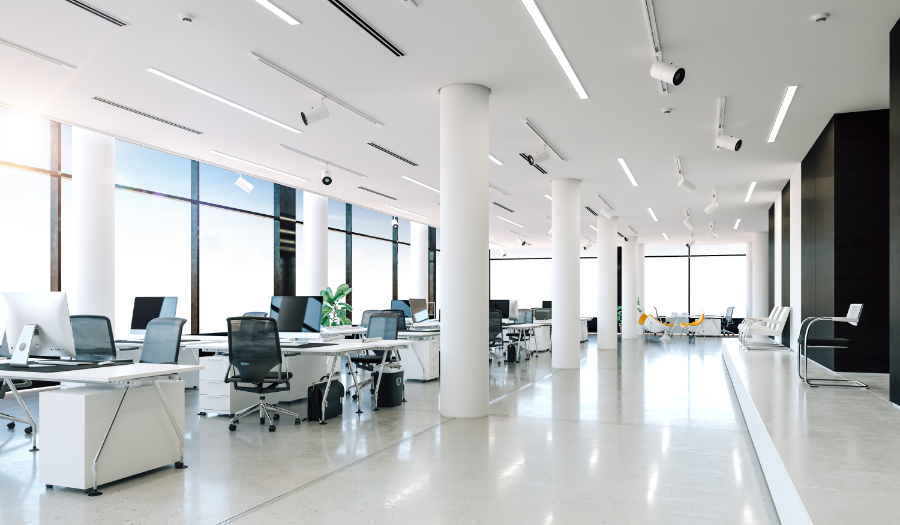In this article, you'll learn:
- How office layouts are adapting to maintain social distancing.
- The increased acceptance of remote work and its effect on office space needs.
- Why recreational areas may lose appeal in favor of productivity.
- The demand for flexible workspaces without returning to large private offices.
While the long-term impacts of the COVID-19 crisis will be written over a period of years, a few facts are coming into clear focus. One of them is that the nature of work is going to change. For all of the discussion of changes to the retail sector, coronavirus may prove to have an even more lasting impact on office environments. Here are some trends that we think are likely to emerge.
I Need Some Space
It's hard to get sick if you don't get close to anyone. That's the basic rule underlying social distancing, and it's one that most open floor plan offices violate. Right now, offices are designed to have people sit close to each other, play together, and walk together and bump into each other in the halls and in common areas.
That's likely to change in a post-COVID-19 world. New office designs are already coming out that are built to keep people apart, instead of together. Whether they're spacing out workspaces, creating designated "one-way" walkways to prevent people from walking by each other, or removing chairs from conference rooms, office designers are building more elbow room.
We're All Home-Based, (For) Now
While many companies and many managers have had a great deal of skepticism about the suitability of remote work, COVID-19 has changed all of that. Today, most office workers are remote workers, and, while remote work isn't without its challenges, work is still getting done. At the same time, the move towards remote work is reducing pollution, decreasing commute times and, for some workers, increasing productivity. It's also keeping people safe from intra-office disease transmission.
Most companies won't be going back to having all of their workers in the office all of the time. Instead, many will allow a greater degree of flexibility to their workforces. Most workers will probably stay home some of the time. This could lead to building out offices with fewer workspaces (and potentially lower cost) in the future.
Less Fun... More Work
One of the highlights of many modern open office layouts is areas that are designated for recreation and casual collaboration. Schmoozing over coffee also means coughing on each other over coffee, and working out together also means exhaling viral load together. As workers seek more social distancing, don't be surprised if the desirability of these amenities starts to trend down.
Flexible Workspaces (And No Private Offices)
What a post-coronavirus world is likely to demand is a greater degree of flexibility for in-office workspaces. It's entirely possible to imagine workers being unwilling to sit across from someone with coughs and sniffles (even if they're just seasonal allergies). Others might want to be able to spend their "in-office" days being productive at a quiet desk. Because of this, you could need to allow people more flexibility about where they work in an office on a given day. The good news is that this flexibility can be accomplished with spacing, varied work areas, and the strategic use of furniture. There is no reason to think that these desires will move offices back to expensive and inefficient designs based on offering everyone large private offices.








